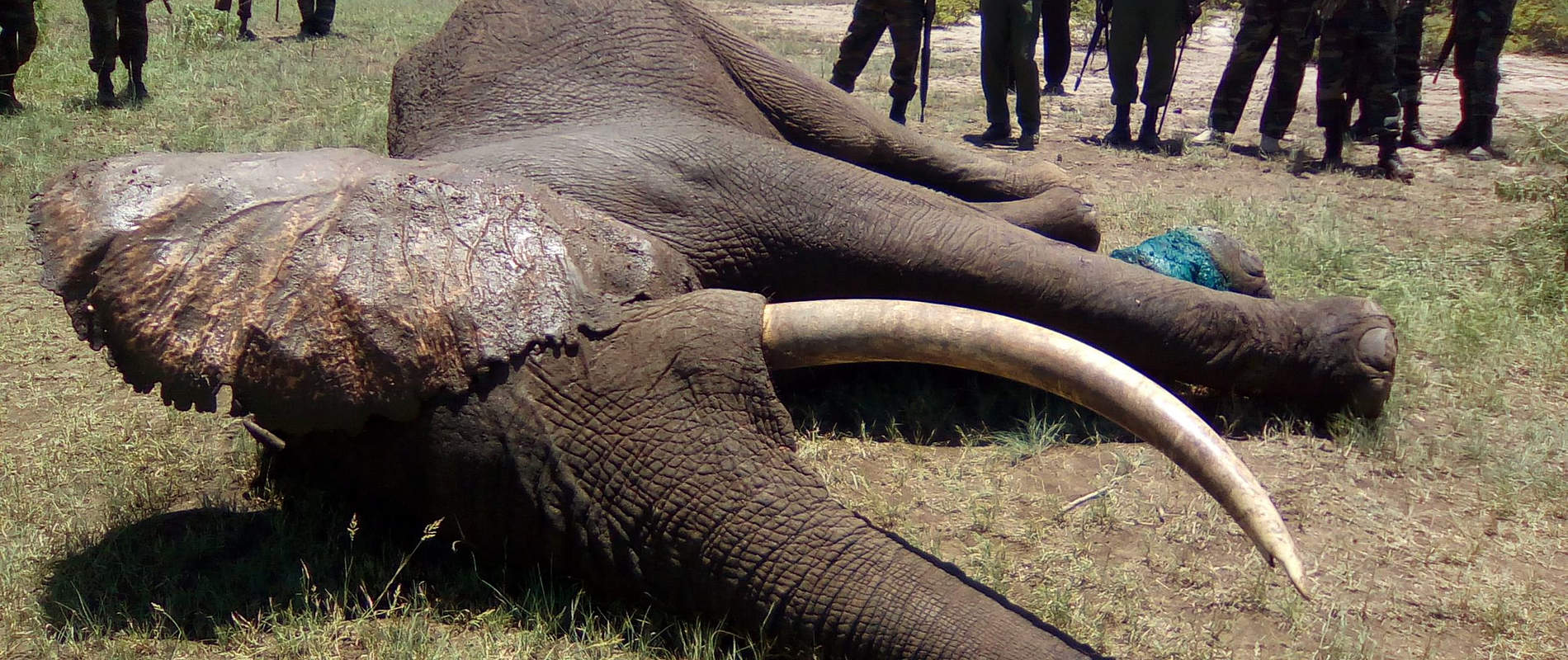FIELD VETERINARY REPORT FOR SOUTHERN CONSERVATION AREA MOBILE VETERINARY UNIT FOR THE MONTH OF APRIL 2018 Reported by Ndambiri Ephantus Introduction The month of April brought heavy down pours for Amboseli National Park which had a devastating effect within the park
FIELD VETERINARY REPORT FOR SOUTHERN CONSERVATION AREA MOBILE VETERINARY UNIT FOR THE MONTH OF APRIL 2018
Reported by Ndambiri Ephantus
Introduction
The month of April brought heavy down pours for Amboseli National Park which had a devastating effect within the park. Many of the roads, especially within the causeway circuits, were rendered impassable with high levels of water. Animal populations within the park are at the lowest as they prefer the raised ground of the surrounding community land. This has in return resulted in a burst of new vegetation cover making the terrain all green. The rain is continuing but we are hoping it will subside soon. The month has been quiet, with hardly any clinical cases. This can be attributed to the fact that animals are deep in the conservancies limiting human contact because there is plenty of food and water for all.
CASE #1 SNARED ELEPHANT TREATMENT
Date: 5/04/2018
Species: Loxodonta africana
Sex: Male
Age: Adult
Location: Lower Tana Delta Conservancy
History
The report of a snared elephant was made by the DSWT Operation Room based at Kaluku on the evening of 4/4/2018. A plan was made for the DSWT SKYVET initiative fixed wing from Kaluku to pick the Amboseli vet from the Amboseli National Park Headquarters the following day, 5/4/2018, early in the morning and head to Garsen for desnaring and treatment of the snared elephant. We landed at Narasaa Air strip where we met three teams; two from KWS Mijira station and another from the Conservancy. The vet unit was then transported to the elephant’s location, near Chala, close to the Indian Ocean shore, where we met the Operation Team from Baomo KWS Station who were monitoring the snared elephant. We had to cover about three kilometers on foot as the area was unmotorable due to wet silt. Fortunately the animal, though dangerous, could not manage a strong and fast charge.
The animal was all alone because it could not keep up with the pace of the sound counterparts. It was alert and aware of the surroundings and becoming increasingly agitated by human presence. We approached and could clearly see it had a swollen front right limb with a pus covered wound around the fetlock resulting in severe lameness. It was estimated to have had the traumatic wound for more than a month and a half. It intended to invade wet silted grounds on the delta and we had to quickly move in and intervene. The dart was quickly prepared whilst the rest of the team formed a semi-circle to prevent the animal from entering the wet silted areas.
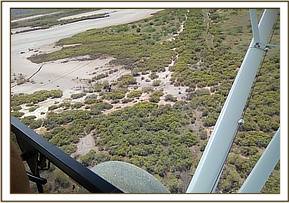

Immobilization, examination and treatment
Two darts were prepared constituting of 15mgs Etorphine in a 1.5cc dart. One was loaded into Dan-Inject Dart Gun whilst the other was put aside in case the first one was ineffective. The vet approached and efficiently placed the dart in left rump. It assumed dog sitting position after four minutes post darting. The vet team manually pushed the elephant onto its side for treatment.
A winch wire snare knot was seen emerging from the pus covering the wound. The wire was embedded 15cm deep and had to be removed cautiously from the necrotic pussy tissue. The resultant traumatic would was cleaned using Hydrogen peroxide and tincture of Iodine, removing all debris superficially to avoid bleeding. It was then covered with green wet clay to encourage tissue regeneration. Topically it was sprayed with Tetracycline wound spray. Systemically the elephant was injected with 30000mgs Tetracycline, 250mgs Flunixin Meglumine and 100ml Multivitamin into different muscles sites using different needles and syringes for each one.
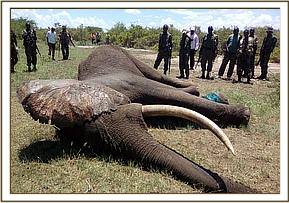

Reversal and Prognosis
Immobilization was reversed using 60mgs Naltrexone mixed with 24mgs Diprenorphine injected into the superficial ear vein. The animal recovered from anesthesia after three minutes post reversal. It sniffed the wound and felt some relief before limping off in the opposite direction. The conservancy team was advised to keep monitoring the animal and inform the relevant authority if another treatment is required.
The elephant was given a fair prognosis as he had enough browse and water within the area and was still strong despite the injury.
CASE # 2; TWO ELEPHANT CARCASSES AT KITIRUA DAM
Date: 13/04/2018
Species: Loxodonta africana
Sex: Male, N/A
Age: Young-adults
Location: Kitirua Dam; Amboseli National Park
History
Two elephant carcasses were spotted on the evening of 12/04/2018 by the Amboseli Park Patrol Team who informed the vet unit. They still had all their ivory which was recovered by the team for safety.
Postmortem Findings
The first male carcass had been eaten by predators, only leaving the skeleton covered with dry skin. A thorough examination was done visually and where necessary with manual manipulation, but no meaningful observation as to tentative cause of death was possible. The carcass was approximated to be over five days old.
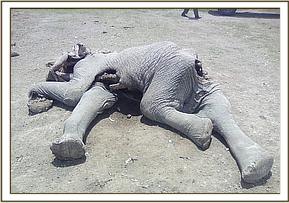
The second carcass was inside the water about a hundred meters from the first one. The head was dismembered possibly by predators who had taken it out of the water to the edge. The ivory was still lodged in the skull. The rest of the carcass was half submerged in the water and no meaningful observation was forthcoming as to tentative cause of death because of decomposition.
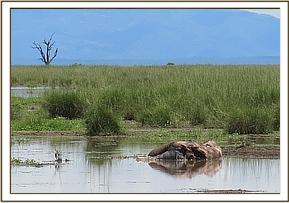
Conclusion
Both deaths were recorded as natural deaths.
Way forward
Even though with the challenge off road driving because of rains, a thorough patrol and active monitoring was recommended by the security and operation teams which are situated nearby with aim of sighting either more carcasses or seemingly ill animals before they succumb for meaningful intervention to be done. The dam acts as source of quench for animals headed in and out of Park as it is very near Park border. The teams were also advised to be on the lookout and report any other carcass sighted within the area so as to keep infectious diseases, if any, at check.
Acknowledgement
In summation the Amboseli Unit acknowledges the overwhelming support from KWS and DSWT initiatives including Sky Vet through which the coastal case was attended. Other stakeholders including community conservancies, the Non-Governmental Organizations working within the ecosystem and the people of good will cannot be forgotten. Through the established partnership we endeavor to achieve more.
